With The Lord of the Rings: Tales of Middle-earth, Wizards of the Coast has re-envisioned J.R.R. Tolkien’s Middle-earth as more ethnically diverse than we’ve ever seen it before.
In seeing art from the new set, some have wondered, “Would Tolkien approve of the representation of Aragorn as having brown skin, or Legolas with East Asian features?” As a scholar of ancient texts, I find the question of authorial intent fascinating. Answering this question can tell us a number of interesting and important things about Tolkien’s belief system! We’ll get there—I don’t think that’s an uninteresting question.
I do think the question partially unhelpful, and for two reasons:
First, there’s the underlying reason why this question is being asked. Why is it the skin color and ethnic traits of the characters feature of Magic: The Gathering’s adaptation that provokes this question, and not the fact that we are taking a mythic tale infused with moral and spiritual and practical depth and making it into a game centered around magical combat which will be sold, in part, in a manner resembling gambling? Given the tenor of online discourse, we don’t have to guess that some amount of this is based in entrenched attitudes about race, and this question may be being asked in bad faith, as a smoke screen for a fundamentally racist argument.
Second, Tolkien’s imprimatur would only tell us so much. As much as I love J.R.R. Tolkien—and I think he’d agree with this—authorial intent is not the sole determining factor in deciding whether an adaptation is good. The ethics of adapting his story with diversified ethnic representation is not ultimately a question about authorial approval, but of moral reasoning. That is, discerning whether this representation and adaptation is a good one remains our responsibility.
Like Galadriel tells Frodo, “This task is appointed to [us].” How can we answer it?
Before I continue, let me make clear that I’m only one voice, weighing in with only 2,700 words. My credentials and positionality are that I’m a [straight, white, male, millennial] professor that regularly teaches Tolkien, ethics, theology, and film (sometimes in the same course) to students at a Catholic university. (My opinions are not necessarily those of my university, the Catholic Church, Hipsters of the Coast, etc, etc).
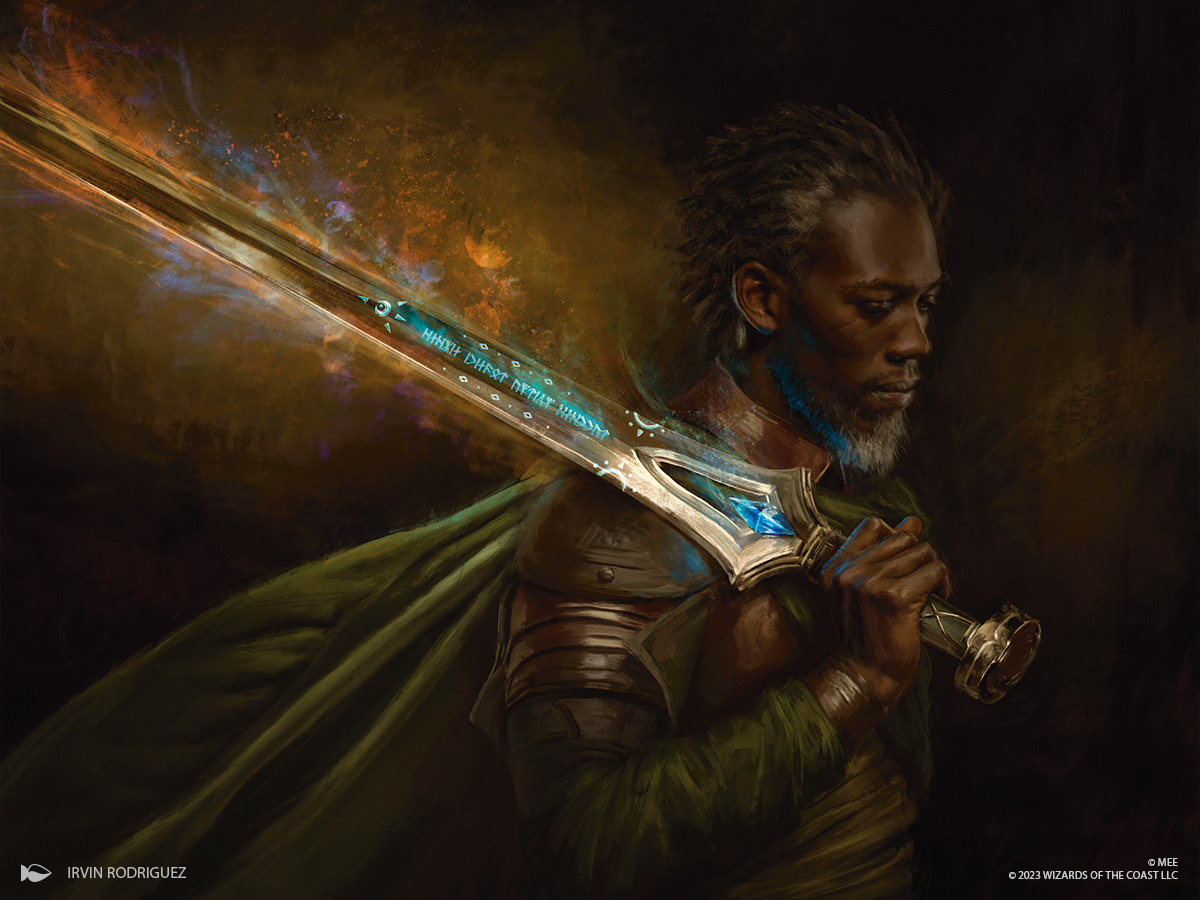
Anduril, Flame of the West by Irvin Rodriguez
The Fraught Question of Authorial Intent
Asking about what a deceased author would think of contemporary adaptation of their stories is a fraught process. What does it mean to focus on a “what if” scenario for an author who cannot contradict whatever a commenter can project onto them? At best we will arrive at an informed, educated guess as to how a person raised in another era could react to decades of changes in society. We would be extrapolating from data (explicit things the author wrote or was reported to have said, his life story, the values expressed in his work, etc) that are themselves a product of a time and a place that are not the era into which we are adapting their work. That said, in the case of Tolkien, we do have data.
Especially germane to our task is that we know Tolkien was profoundly shaped by his love of history, language, and mythic narrative (cf. his “Mythopoeia” and “On Fairy Stories”). We also read in his correspondences that he disdained Nazis (Letters 29 & 30).
Additionally, we know that while he was very particular about how his stories were adapted (cf. letters 207, 210), he was open to adaptation, as he writes in the fall of 1957:
“An abridgement by selection with some good picture-work would be pleasant, & perhaps worth a good deal in publicity; but the present script is rather a compression with resultant over-crowding and confusion, blurring of climaxes, and general degradation: a pull-back towards more conventional ‘fairy-stories’. People gallop about on Eagles at the least provocation; Lórien becomes a fairy-castle with ‘delicate minarets’, and all that sort of thing.
“But I am quite prepared to play ball, if they are open to advice – and if you decide that the thing is genuine, and worthwhile.” (Letter 201)
Furthermore, Tolkien here suggests that adaptations can be worth “a good deal in publicity;” that is, adaptations drive people back to the source (the text itself).
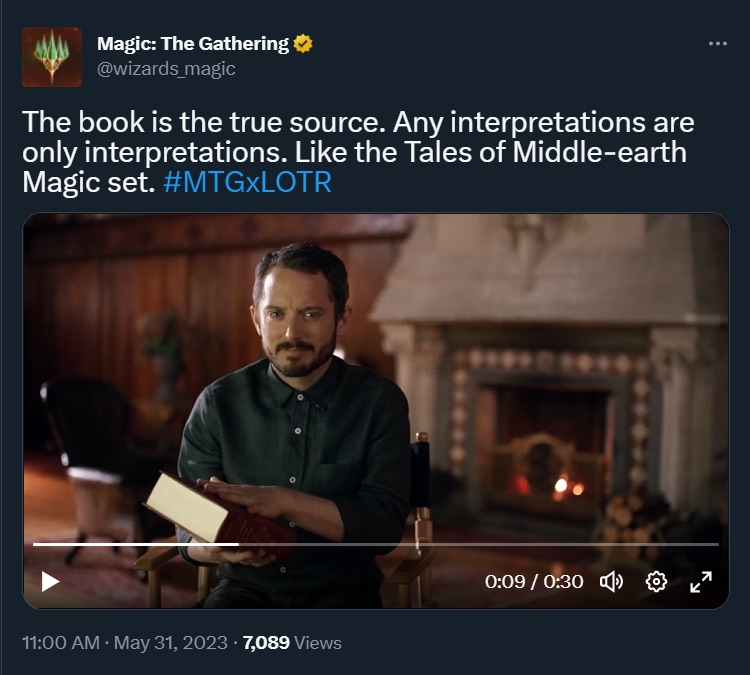
A reminder from the Magic: The Gathering twitter account.
Adaptations and Fidelity
For Tolkien and others, fidelity is often said to be the mark of a good adaptation. Early scholarship on media adaptations of literature argued that adapted versions should try to reproduce a work as exactly as possible. By this logic, all adaptations were parasitic, secondary, inferior works that inevitably failed in some way. “Every translation is a treason,” as an old saying goes. The morally loaded tenor of that aphorism (which I found first, ironically, in French, but is from Italian) is intentional, as many critics in this school see fidelity as having an ethical valence. Contemporary scholarship has shifted, however, and tends to see fidelity as one value among many (including, for example, creativity), and as having multiple potential facets. Is the fidelity in question one of plot, tone, spirit, or dialogue?
Adaptation, according to scholar Linda Hutcheon, is both a re-interpretation and a re-creation of the material of the literary work—not only because of a shift in medium, but also because of the openness to interpretation of any original work. Drawing on Hutcheon’s work, some, like Hossein Keramatfar and Sara Bavakhani, argue that absolute fidelity of an adapted work to its literary source should not be considered the ultimate criterion for judging whether an adaptation is successful. In fact, novels, films, and games employ different “modes of representation” that make absolute fidelity impossible. Instead, what needs to correspond closely enough to the original is the story, the most important element of which is “character.” In other words, we can judge whether or not an adaptation of The Lord of the Rings is a good adaptation based on elements like plot and characterization.
The Lord of the Rings has been adapted and retold to suit the needs of each subsequent generation. According to Connie Veugen, senior lecturer at the Vrije Universiteit in Amsterdam, “this is part of the book’s strength and lasting appeal. And, in my view at least, also due to Tolkien’s use of ‘ancient wide-spread motives [and] elements’ (Letter 131)”. In every subsequent adaptation and retelling, however, the characters get redesigned and the portrayals change. Are previous iterations, like Ralph Baskshi’s or Peter Jackon’s, faithful adaptations?
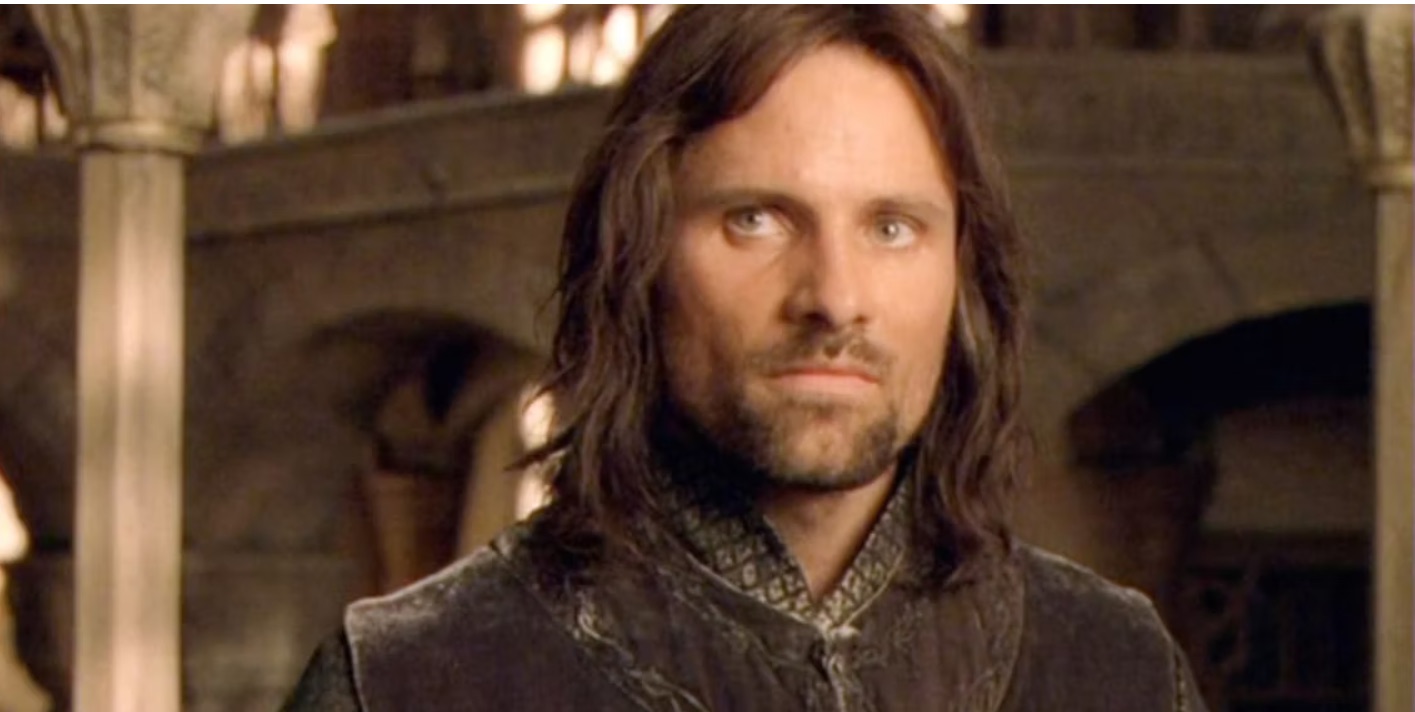
Viggo Mortensen as Aragorn in Peter Jackson’s adaptation of The Fellowship of the Ring.
As Veugen tells it in “A Man, Lean, Dark, and Tall: Aragorn Seen Through Different Media,” Tolkien’s Aragorn is one that follows the type of the Germanic or Celtic hero (think Sigurd, from the Volsunga Saga) and the hero of romance, whose “true identity must be hidden from Sauron until the time is ripe.” This complex reality, Veugen says, may be impossible to adapt strictly faithfully into other media. She reads Ralph Bakshi’s Aragorn, for example, as fittingly suited to the role of the Ranger Strider, but utterly implausible as a hero-king, except perhaps ironically.
In Peter Jackson’s version, Veugen writes:
“Similar to Tolkien’s version we only find out Aragorn’s true identity at the council of Elrond. But the primary reason is not that Aragorn’s real identity has to remain hidden from Sauron, it is because Aragorn fears that he will make the same mistake Isildur has made. This Aragorn is not proud of his heritage, so in the Jackson films the transition from Ranger to king is the reluctant struggle of an heir who doubts his bloodline and his part in the Ring quest. […] Jackson turns the Germanic hero into a renaissance Hamlet full of doubt and fallibility. […] In doing so, [he] shows Aragorn as a modern type of action hero, giving the present generation of moviegoers a hero they can identify with.”
Veugen’s reading of these and other adaptations reveals the difficulty of rendering the complexities of Tolkien’s heroes apart from his original work, and suggests both the strengths and the shortcomings of any adaptation. The “abridgement” and “vulgarization” of the characters and the story occur as the nigh inevitable cost of retelling the myth in new media to new audiences.
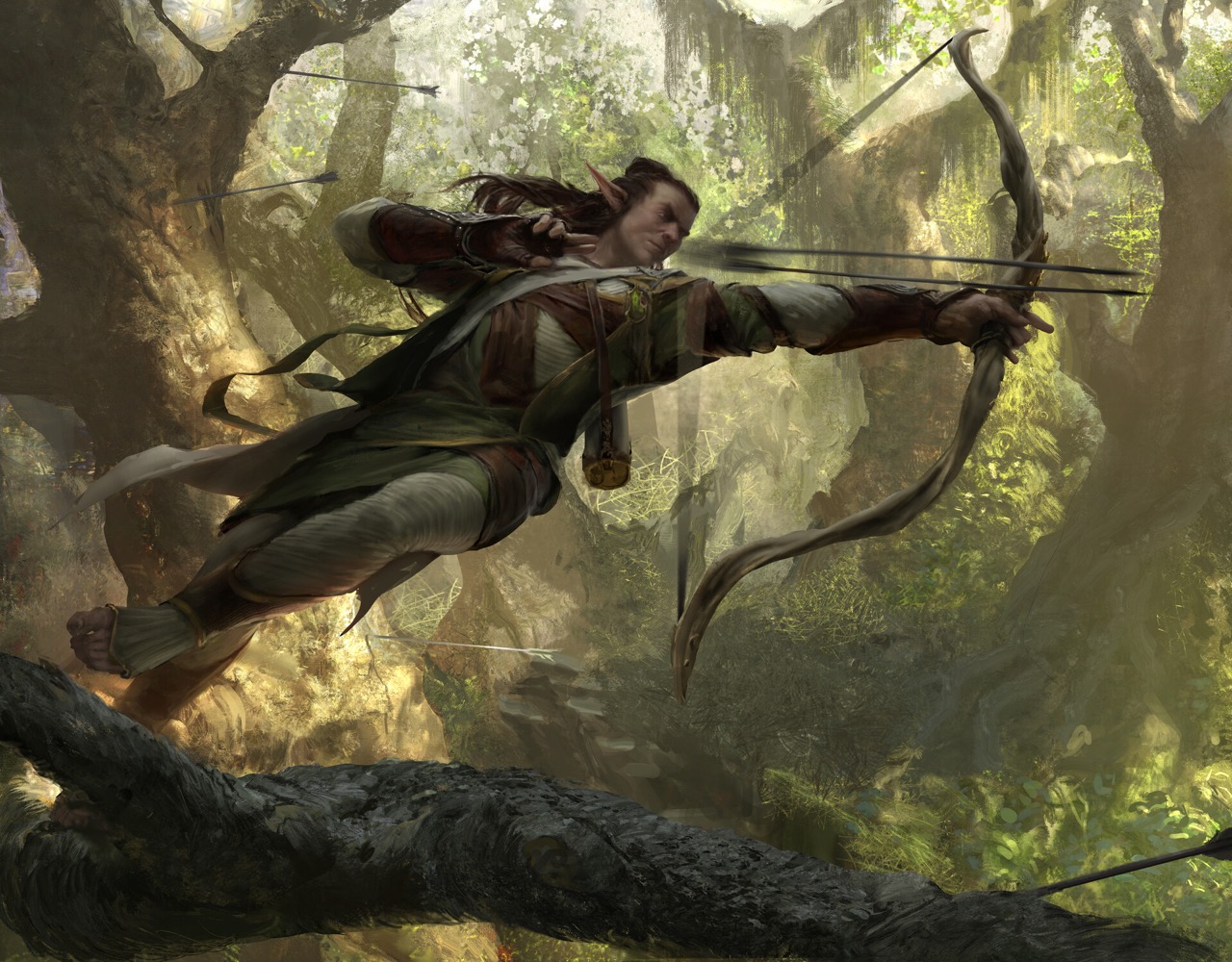
Legolas, Master Archer by Campbell White
Representation and Adaptation
In Magic: The Gathering, the places where characterization and story can be expressed are in the rules of the individual game pieces (the cards), and in the art, which is the visual portrayal of the characters and story action. This latter piece is the crux of the issue. Next to no one is complaining about his mechanical abilities in-game. They’re up in arms because his skin color isn’t strictly faithful to the text.
In the source text, Gandalf’s letter describes Aragorn as a man “tall, dark, and lean,” and the narration elsewhere describes him as having “a shaggy head of dark hair flecked with grey, and in a pale stern face a pair of keen grey eyes.” In the legendarium, Aragorn’s heritage is described as coming from lines of fair-skinned people, who long-ago intermarried with elves (and Tolkien notes in letters that this means he can’t grow facial hair).
No adaptation has been strictly faithful here! For example, beyond the significant differences in the character’s manner and motives from Tolkien’s text seen in Peter Jackson’s characterization of Aragorn (noted just above), his portrayal with a beard neglects Tolkien’s own words about his elvish heritage (cf. “The Nature of Middle-earth”). We may ask whether changing these characteristics renders a character too unfaithful: Are Tolkien’s descriptions of Aragorn’s appearance (which no adaptation seems to have followed precisely) ever necessary to the plot, or are they a secondary choice? Is anything lost by imagining Aragorn, and perhaps by extension the Numenorians, as having any other skin color but a range from light tan to pale white?
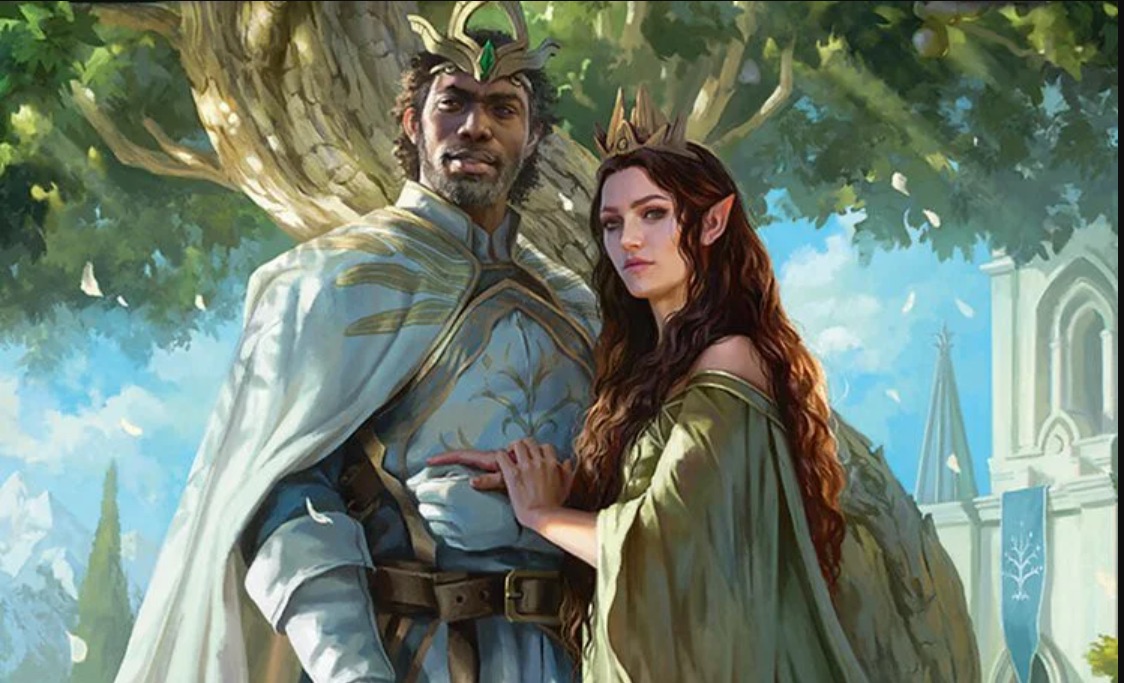
Aragorn and Arwen, Wed by Magali Villaneuve
Ultimately, the story remains intact, as does the spirit of the characters—a king long forgotten returns to lead an army to hold back the darkness, and while miles away, the humblest of countryfolk undertake a task of great bravery. Making Aragorn appear to be of African descent, or Legolas East Asian (places, of course, that don’t exist in Middle-earth, even if they may have in-world analogs) is an adaptation that doesn’t change the story or the personality traits of the characters (unlike the popular characterization of Aragorn in Peter Jackson’s films). And lest we forget, stories—especially influential stories like The Lord of the Rings, which are very nearly the “myths” Tolkien aspired to create—get retold and changed in the retelling all the time.
What we lose in changing a major character’s skin color is perhaps an intended likeness between the author’s description and between European physical characteristics that say something about the milieu in which the author would like his story to be received; that is, as he wrote of it, an English story “bound up with the tongue and soil” of England as he knew it in the first half of the 20th century, and as he had read about and imagined it existing prior. Despite the fact that Tolkien’s England was a multiracial England, it is nevertheless likely that his own imagination focused on his fictional analogs to angles, saxons, Danes, and Celts—the people groups with which he was most linguistically familiar.
So how would Tolkien come down on the question of adaptation by way of changing the ethnic appearance of his characters? When we ask this question, we are really asking about whether Tolkien would today consider those racial analogs I mention just above essential to the character of the story, or whether he would appreciate retellings of the myth that adapted to their context over time, and were inclusive of the peoples of England in the 2020s, or in the case of Magic, the United States in the 2020s.
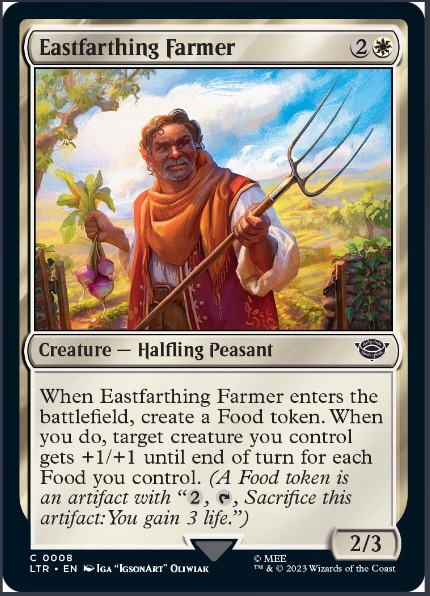
But how much weight should that question even carry? Tolkien’s portrayal of races is centered in his early 20th century, eurocentric, anglocentric worldview, which can and has been criticized (cf. Christine Chism’s article in The J.R.R. Tolkien Encyclopedia, 2006). This criticism of the moral standing of Tolkien’s racial views (either in his own context or in ours) helps us to see that whether we imagine Tolkien would be on board with any given adaptation doesn’t ultimately answer whether an adaptation is a good adaptation or whether it should be done. Authorial intent matters deeply to the meaning of the story, but it is far from the only determining factor in what the story means to its readers over time, or what it means to tell that story in other media.
Our retellings aren’t often merely matters of taste. How we retell our myths and important stories matters—when changes are made we should examine why we made them, how they alter the narrative, and if we resent them, why that is. If I were upset or uncomfortable about a black Aragorn, I would have to ask myself, “Why is that?” Was I more or less upset about other alterations in the story? The discomfort should be examined. What can that tell me about my understanding or expectation of what is essential to the character and the story? (And, importantly, what does that tell me about myself?)
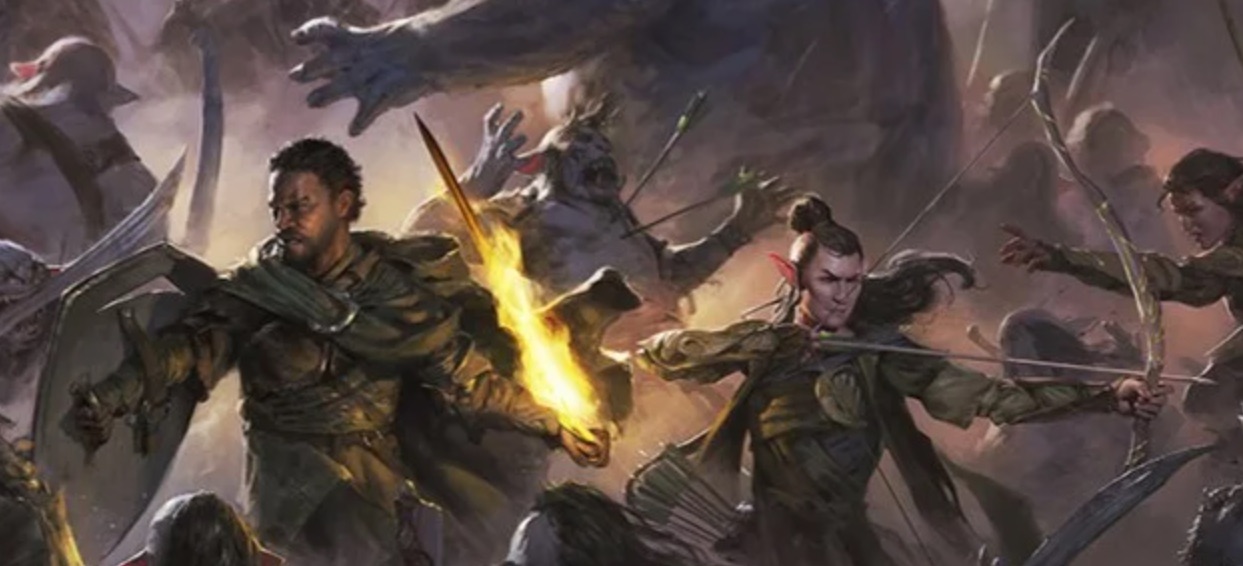
Detail from Tyler Jacobson’s panorama of Pelennor Fields
Concluding Thoughts
In his lifetime, Tolkien grumbled over “silly” adaptations and The Lord of the Rings’ adoption by hippie counterculture, but still speculated about the positive value a new, American adaptation might have for bringing attention to his original works (even with the risk of “vulgarization”). Indeed, he even anticipated that others may “paint” or “dramatize” his world, leaving “scope for other minds and hands” (Letter 131).
The Hobbit and especially The Lord of the Rings are in part about the many races (which to Tolkien aren’t “black, brown, white,” but “human, hobbit, elf, dwarf…”) of Middle Earth coming together in cooperation, despite racial attitudes and tensions among peoples (attitudes which are represented on the pages). In adapting The Lord of the Rings for their especially American context, the “other minds and hands” at Middle-earth Enterprises and Wizards of the Coast have given us a vision of Middle-earth that represents their interpretation of Tolkien’s myth for a diverse player base in the 21st century. Unlike Tolkien’s telling, which described characters as fitting into the dominant palette of English skin and hair colors then, MEE and Wizards have represented these characters as coming from the palette of their (global, but especially American) audience now.
The aim of this piece has been to address some of the online discourse surrounding representation in Magic the Gathering’s The Lord of the Rings: Tales of Middle-earth. I wanted to highlight the pitfalls of leaning too heavily on authorial intent as an arbiter of the ethics of adaptation, and put forward some steps toward beginning to think about the challenge and morality of these representations. So many facets of this issue could not be addressed here, for a host of reasons, not least of which is word count. Suffice to say, they would be in support of this conclusion:
Representation is an ethical act. Positive representation, that stems from recognition, is a moral good. There is a joy to seeing oneself represented when it is because you yourself were seen. Simone Weil, the 20th-century French activist and philosopher, argues that people ground down by the world need others capable of giving them their attention. I would imagine lots of us can attest to the life-giving power of feeling “seen.”
That’s what diversified adaptations of Aragorn and Legolas mean to so many non-european fans of Lord of the Rings. It’s a small gesture by a big company that makes games, and maybe one that isn’t entirely unmotivated, but it’s a gesture, all the same. And as Galadriel said,
“Even the smallest [gesture] can change the course of the future.”
Selected Sources:
- J. R. R. Tolkien, The Fellowship of the RIng
- Humprey Carpenter & Christopher Tolkien, The Letters of J.R.R. Tolkien
- Connie Veugen, “‘’A Man, lean, dark, tall’: Aragorn Seen Through Different Media,” in Thomas M. Honneger, Reconsidering Tolkien.
- Hossein Keramatfar and Maryam Beyad, Cinema and Its Representations
Special thanks to Kristen Gregory, David McCoy, and Adrienne Reynolds for their work in reading and commenting on earlier versions of this essay.

